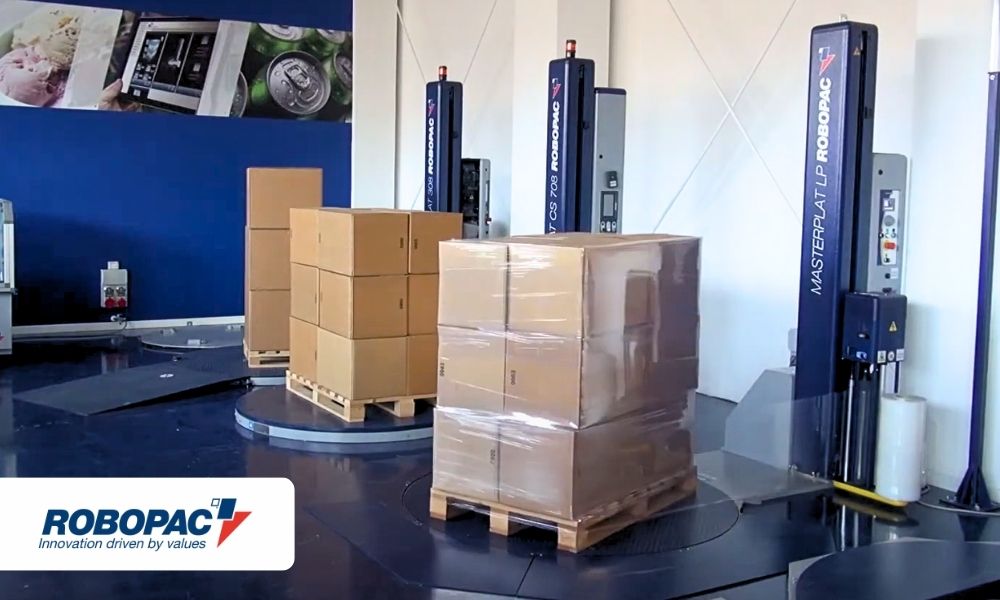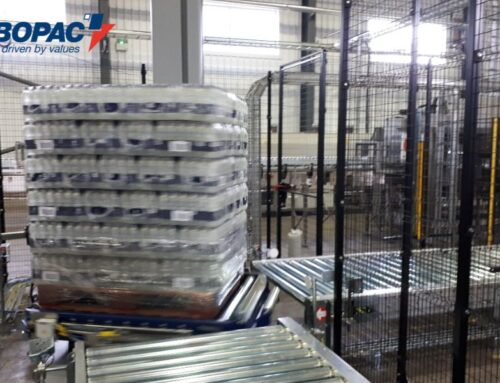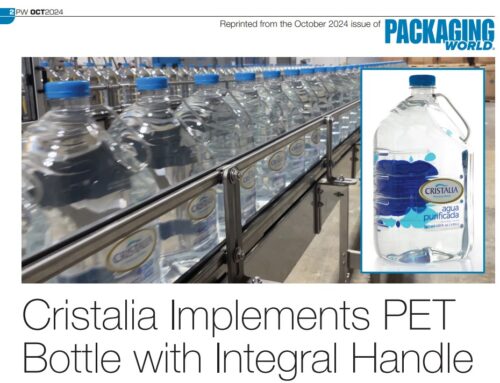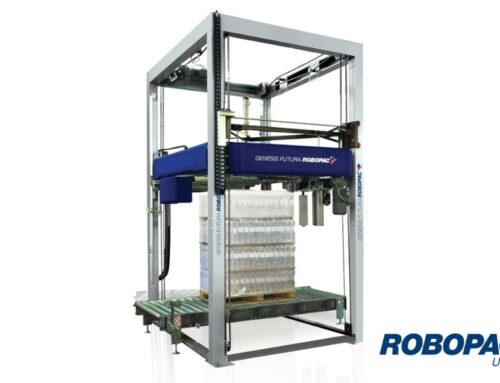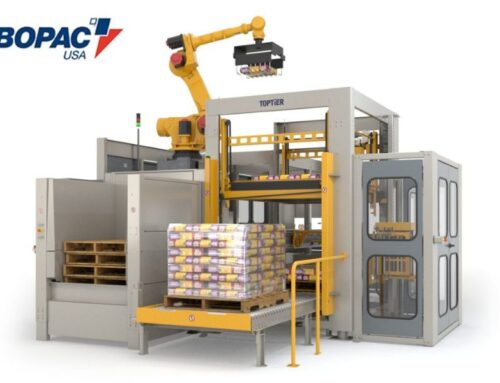Effective packaging is more than just wrapping and boxing items. It involves a strategic approach that considers various factors such as product fragility, weight distribution, stacking capabilities, and transportation conditions. By mastering the art of proper packaging, businesses can prevent product damage, reduce supply chain costs, and improve customer satisfaction.
Whether you are a logistics manager or a business owner involved in shipping goods, understanding the importance of packaging is essential to ensure the safe and efficient transportation of your products. Read on to gather expert tips and strategies for how to properly package freight shipments and improve your company’s shipping process.
Achieve Perfect Containment Force for Every Load
When it comes to secure pallet wrapping, achieving the perfect containment force is of the utmost importance. Containment force refers to the tightness and stability of the stretch wrap around the load. As such, it’s responsible for ensuring that products stay intact during transportation and storage. This force is crucial for preventing shifting, toppling, or damage to the products.
To ensure optimal containment force, there are several techniques that businesses can employ. First, selecting the right stretch wrap film is essential. Consider factors such as film thickness, elasticity, and puncture resistance to find the ideal option for your specific load requirements.
Proper tension is another critical aspect. Achieving the right amount of tension ensures that the stretch wrap firmly holds the load without causing damage or distortion. Utilizing stretch wrap machines with adjustable settings for wrap force, pre-stretch levels, and more can help you optimize tension and achieve consistent and reliable results.
The heavier your product load is, the more containment force it needs to stay stable and secure throughout the supply chain. Below are the general guidelines for the proper level of containment force for different load sizes:
- 0- to 500-pound loads require 2 to 6 pounds of containment force
- 500- to 1,100-pound loads require 6 to 8 pounds of containment force
- 1,100- to 1,700-pound loads require 8 to 17 pounds of containment force
- 1,700- to 2,200-pound loads require 15 to 22 pounds of containment force
Be sure to measure containment force at the top, middle, and bottom of the load. An optimized wrapping job will treat each area separately to create the ideal level of containment force for each location.
Use Roping to Your Advantage
Roping is a stretch film wrapping technique that helps reinforce product loads and secure the load to the pallet itself. The main advantage of roping is the enhanced stability and security it provides. By strategically applying tight, narrow ropes of stretch film across the load, you can effectively distribute the tension and prevent any shifting or movement during transportation while using less film overall. This ensures that your products arrive at their destinations in pristine condition and helps cut costs and material waste for your facility. Moreover, the roping technique allows for increased breathability, making it especially crucial for transporting fresh products that require proper ventilation.
Tuck Film Tails To Avoid Snags and Damage
If you have excess film trailing behind the pallet, it can easily get caught on forklifts, other pallets, nearby shelving, and other obstacles. These snags can jerk the pallet around, causing it to tip or crash and posing a serious risk to employees, equipment, and products. Film tails can also cause the stretch wrap to tear or unwind, ruining the integrity of your wrapping.
To prevent such issues and maintain the pristine condition of your pallets throughout the supply chain, it is crucial to tuck or trim the film tails. By neatly securing and concealing the ends of the stretch film, you eliminate the risk of snags and mitigate potential damage.
Stack Pallets Properly
Strategically building product loads is key to keeping your goods safe. Some pallet stacking strategies are simply common sense—put the heaviest boxes on the bottom, make sure products don’t hang too far over the edge of the pallet, and so on.
However, other techniques require incredible care and precision. That’s why an automatic palletizer is the best investment for achieving optimized pallet builds, improving stability and efficiency, and creating a consistent palletizing process for your packaging line.
With precise placement and secure stacking, automatic palletizers ensure consistent stacking patterns. This eliminates human error and variability and results in uniform and stable pallets that minimize the risk of shifting or toppling during transportation. By automating the palletizing process, you can significantly increase productivity and throughput and ensure that every product load is ready for safe and dependable transportation.
Cushion Layers With Cardboard
When it comes to optimizing the protection and stability of your palletized goods, incorporating cushion layers with cardboard can make a significant difference. By placing a layer of cardboard between each layer of boxes on your pallet, you can introduce an additional level of cushioning that helps absorb shock and protects the lower layers of product.
The layers of cardboard help to absorb impact and minimize the effects of vibration and sudden movements during transportation. This can prevent damage to the contents of the boxes and maintains the integrity of your products.
Furthermore, the cardboard cushion layers help stabilize the load. They provide an additional barrier between the boxes and reduce the risk of shifting or collapsing during handling and movement. This ensures that your pallet remains intact and secure throughout the supply chain.
Utilize Corner Guards
You can’t always avoid all contact with your product load. From moving around facilities on forklifts to shifting while in the back of a truck, your cargo is going to move around and bump into things. When this happens, corner guards serve as a crucial protective measure for the corners of your pallet.
By installing corner guards, you can protect your boxes from being crushed or damaged due to shifting and movement. Additionally, these guards play a vital role in preventing sharp corners from puncturing the stretch wrap and causing tears.
Consider the Customer Perspective
When looking for ways to properly package freight shipments, it helps to put yourself in your customers’ shoes. What do your end users see when your goods arrive? Remember, the condition of your pallet and the products on it act as a reflection of your company. Messy or damaged pallets make you seem unreliable, which means some customers might not want to buy from you or work with you again.
Clean, well-labeled, and properly packaged product loads allow you to represent your company in the best light. Inspect your product loads before they leave your facility. Make sure they’re neat, tightly wrapped, and secured to the pallet. This will ensure your products move safely through the supply chain and look pristine and ready to go when they reach your end users.
Optimize Your Packaging Line With Robopac USA
Increase efficiency and consistency at every stage of your packaging line with pallet wrapping turntables and other secondary packaging equipment from Robopac USA. Work with our team today to learn more about our equipment solutions and implement a flexible and productive workflow for your facility.


